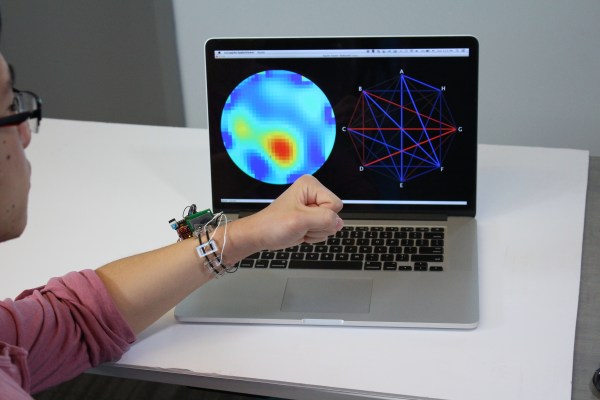Seeing what’s going on inside a human body is pretty difficult. Unless you’re Superman and you have X-ray vision, you’ll need a large, expensive piece of medical equipment. And even then, X-rays are harmful part of the electromagnetic spectrum. Rather than using a large machine or questionable Kryptonian ionizing radiation vision, there’s another option now: electrical impedance tomography.
[Chris Harrison] and the rest of a research team at Carnegie Mellon University have come up with a way to use electrical excitation to view internal impedance cross-sections of an arm. While this doesn’t have the resolution of an X-ray or CT, there’s still a large amount of information that can be gathered from using this method. Different structures in the body, like bone, will have a different impedance than muscle or other tissues. Even flexed muscle changes its impedance from its resting state, and the team have used their sensor as proof-of-concept for hand gesture recognition.
This device is small, low power, and low-cost, and we could easily see it being the “next thing” in smart watch features. Gesture recognition at this level would open up a whole world of possibilities, especially if you don’t have to rely on any non-wearable hardware like ultrasound or LIDAR.











